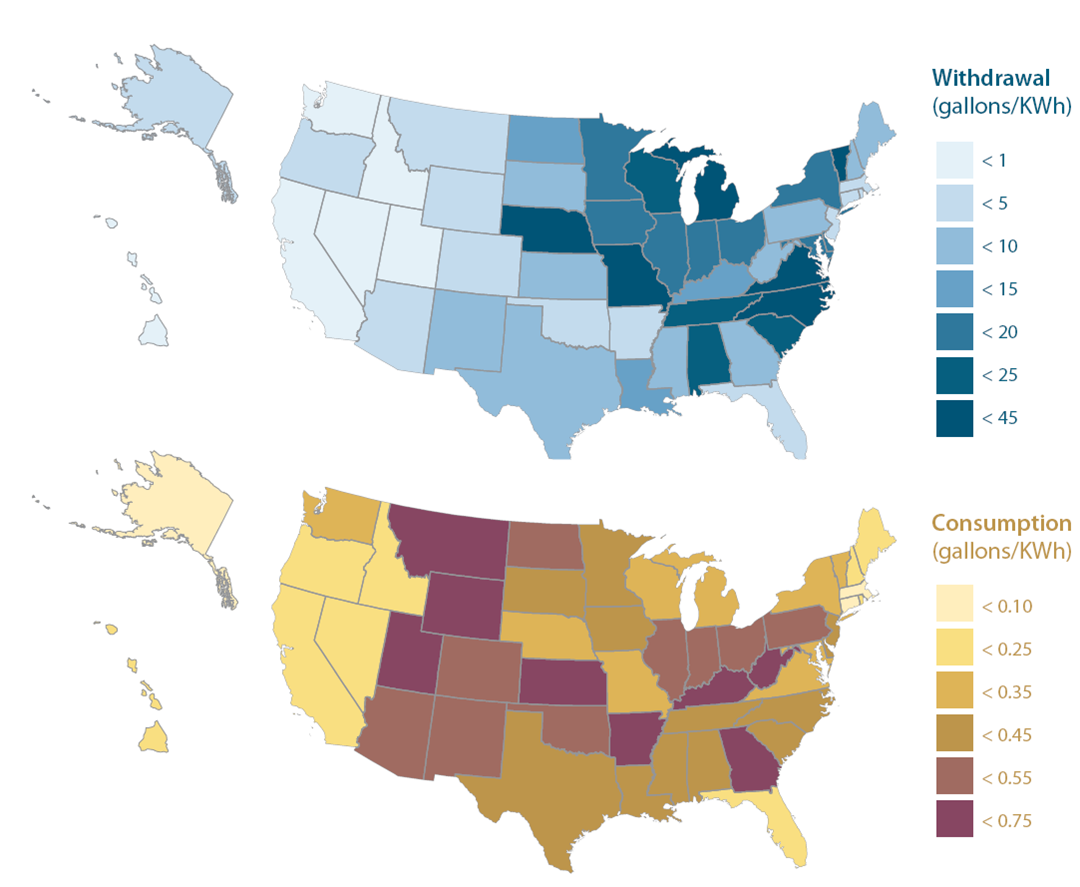From 2GreenEnergy Intern Louis de Saint Phalle: Water Energy Nexus
When we hear rhetoric about meeting our nation’s energy needs in a sustainable way, most of us don’t often hear about water. Personally, I think it’s a shame that given the time I have spent in renewable energy circles, I can almost count on one hand the times I have gotten to talk about the role that water plays in energy.
The Department of Energy released a new report on the Water-Energy Nexus this week, which is the official term when one refers to the relationship between water and electricity generation or transmission .In light of this very comprehensive overview by the DOE and drawing from my research, I thought I’d take the time to share some basic points. Hopefully you will enjoy them.
Non-renewables such as coal, nuclear or gas generate energy to convert water into steam, which then generates electricity through turbines. As part of this thermoelectric process, water is recycled after use with cooling systems, which converts used steam back to its original liquid form. There are different cooling approaches which all have an impact on water use, cost of generation and efficiency. This means that not only does water withdrawals and consumption vary greatly among different technologies for electricity generation, it varies a great deal depending on which cooling system you use.
Here is an overview of water withdrawals and consumption, by technology and cooling type.
Source: UCS Water report
Specific water cooling techniques vary depending on each energy project’s resources and aims. For example, recirculating cooling can be helpful if the energy project is not located next to a large body of water, while once-through cooling utilizes large amounts of water from nearby reservoirs and returns water to its source.
From the above graph, you can maybe start to get an idea of which technologies use the most water. We should invest in low-intensity technologies with regards to water consumption, right?
Notice how little water solar and wind technologies use. Solar Photovoltaics uses ~20 gallons of water per MWh for the like of cleaning reflection surfaces (e.g. wafers or mirrors). On the other hand, water withdrawals can go up to tens of thousands of gallons for a nuclear or coal plant using once-through cooling, and around 1,000 gallons for petroleum, coal or concentrated solar power (CSP) with recirculation cooling. Fossil fuel-based and nuclear power plants are the largest users of water in the energy sector.
It has to be said that certain renewables like CSP or geothermal energy do use very high amounts of water. In certain cases, the numbers are comparable to their fossil fuel counterparts. For example, the Nevada Solar One CSP plant consumes 850 gallons of water per MWh. Geothermal plants also have a very high water use, but use geothermal fluids rather than freshwater for cooling which drastically reduces their overall impact.
All of these power plant water numbers could be lessened with better cooling systems. However, this is often done at the expense of higher capital costs and reduced plant efficiency. It is not very surprising that developers usually go for the most efficient and cheapest cooling method available, at the expense of our water reserves.
The numbers do seem there to support renewables versus fossil fuel technologies with respect to water. This is becoming an increasingly important issue, and “smart” water use is integral to confronting climate change. Looking at countries like China which uses up aquifers and water reserves at an alarming rate to cool fossil fuel plants (mostly coal), I think we have to be really cautious and mindful about this.
As a parting thought, here is an overview of water withdrawals and consumption per state in the US. How well is your state doing?
Some sources useful links:
http://geo-energy.org/reports/Geothermal_Energy_and_Water_Consumption_Issue_Brief.pdf
http://www.geothermal-energy.org/pdf/IGAstandard/SGW/2013/Harto.pdf
http://www.seia.org/policy/power-plant-development/utility-scale-solar-power/water-use-management http://www.worldenergyoutlook.org/media/weowebsite/2012/WEO_2012_Water_Excerpt.pdf
http://www1.eere.energy.gov/geothermal/pdfs/geothermal_water_assessment_use.pdf



